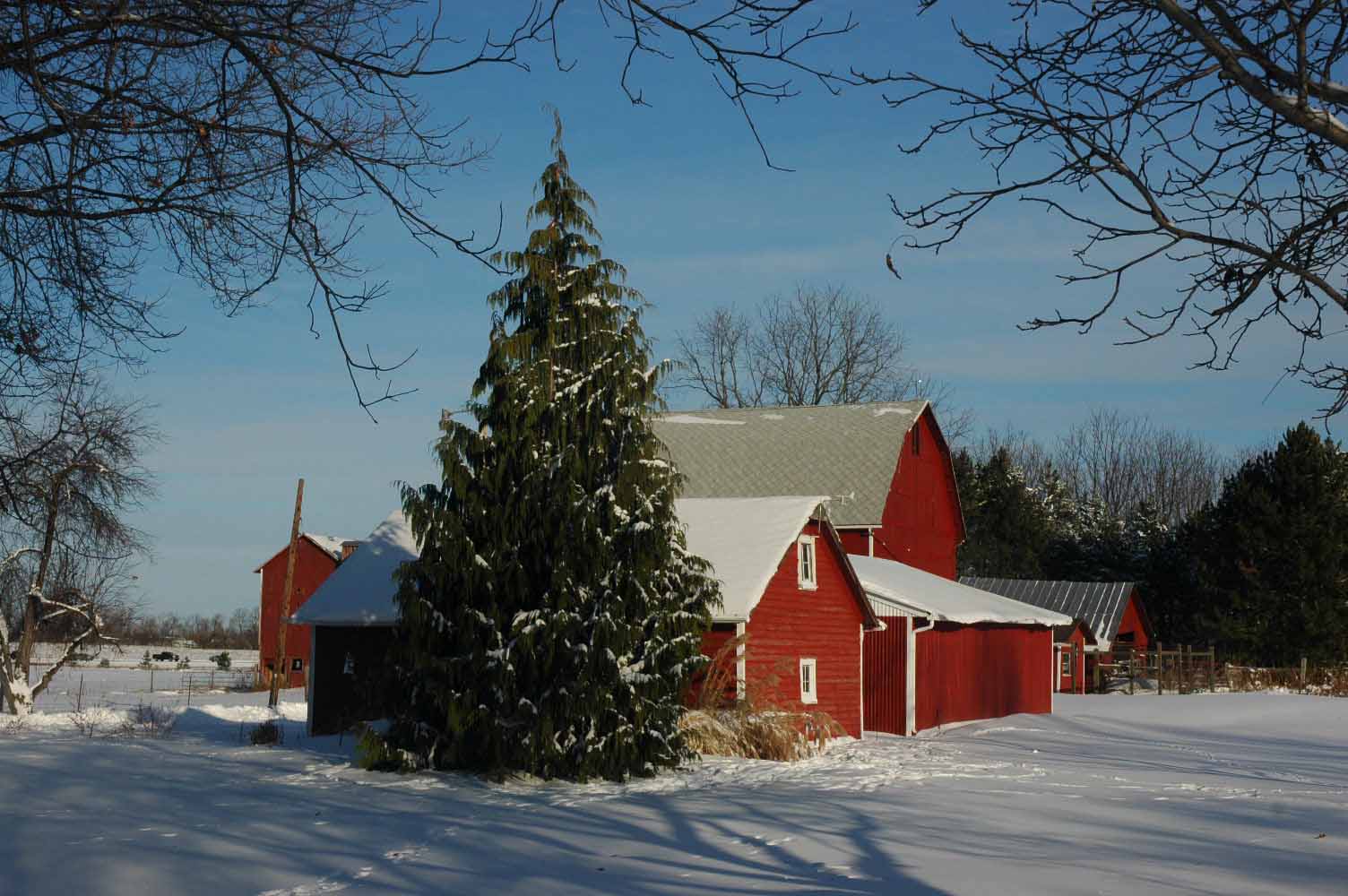This past week I got to spend three days doing one of my favorite things; talking about conifers. Wednesday I was a last-minute guest lecturer for a landscape design class and Thursday and Friday I did my ‘Conifers for Connoisseurs’ talk for our MSU Extension ‘Plants of Distinction’ program. One of my favorite conifers and one I often recommend as a large specimen tree is Alaska yellow-cedar (the name I learned in Mr. Chance’s Botany class at Olympia High School) or Nootka false cypress (the usual common name for the tree in this part of the world). Notice that I didn’t give a scientific name, like a good garden professor should. The reason? I’m not 100% sure what the scientific name for Alaska yellow cedar is any more.

Xanthocyparis nootkatensis at Daisy Hill Farm, DeWitt, MI
Prior to 2000 it would have been easy: Chamaecyparis nootkatensis. Then a team of international scientists including members of the Kew Royal Botanic Gardens and the Missouri Botanical Garden discovered a rare conifer in northern Vietnam, which was previously unknown to science. The new species was described in a 2002 article by Farjon et al as Xanthocyparis vietnamensis. A conifer still unknown to science at the end of the 20th Century, that’s pretty cool. But, in addition to describing and naming the new species, the authors’ also reclassified Chamaecyparis nootkatensis with the new species as Xanthocyparis nootkatensis. While this news was mildly disappointing to those of us who love the tree and thought Chamaecyparis nootkatensis was about the coolest scientific name ever, the name change was not entirely surprising. Within the genus Chamaecyparis, nootkatensis was always the proverbial red-headed step-child. At one point the species had been grouped in the genus Cupressus. The change to Xanthocyparis also required a change for Leyland cypress, an intergeneric hybrid between Alaska yellow cedar and Monterey cypress (Cupressus macrocarpa). Under the new nomenclature ×Cupressocyparis leylandii becomes × Cuprocyparis leylandii.
Now, as if all this weren’t confusing enough, subsequent work by Damon Little based on molecular markers groups all of the Cupressus species in North America and the two Xanthocyparis species under one genus, Callitropsis. Little et al’s re-classification and rejoinder by Mill and Farjon (2005) demonstrate the schism which has developed between taxonmists that rely heavily of cladisitcs and molecular tools and those that rely on morphology and evolutionary relationships. Their debates are far testier than any barbs traded between Linda and the Brothers Horvath. Check out this link for a taste of the action:
http://urhomology.blogspot.com/2009/03/myths-that-evolutionary-taxonomists.html

Xanthocyparis nootkatensis at MSU Horticultural Gardens
So what about us poor horticulturists and foresters who just want to know what to call the damn thing? I suspect the taxonomic battle lines will deepen before anyone offers a peace offering. And this will extend far beyond Xanthocyparis (syn. Callitropsis). Get used to seeing lots of synonyms next to scientific names in the future. Remember when you took your first Botany class and learned we used scientific names to eliminate confusion over common names? Sigh… Alaska yellow-cedar sounds pretty good to me.
Farjon, A., N.T. Hiep, D.K. Harder, P.K. Loc, and L. Averyonov. 2002. A new genus and species in Cupressaceae (Coniferales) from northern Vietnam, Xanthocyparis vietnamensis. NOVON 12:179-189.
Little, D.P., A.E. Schwarzbach, R.P. Adams, and C.-F. Hsieh. 2004. The circumscription and phylogenetic relationships of Callitropsis and the newly described genus Xanthocyparis (Cupressaceae). American Journal of Botany 91(11): 1872-1881
Mill, Robert R. and Farjon, Aljos. 2006. Proposal to conserve the name Xanthocyparis against Callitropsis Oerst. (Cupressaceeae). Taxon 55(1):229-231
<
All this Lumping is getting out of hand! I am rather fond of Alaskan Cedar, a lovely tree and a great wood for carving gargoyles…
But then I am about to self declare that the Echinopsis lump is just too much to bear and bring back Trichocereus at the nursery… I just don’t agree, besides I miss Lobivia and Soehrensia too. Stop with all the super lumps!
I feel your pain, Hap, but I’m afraid this trend is likely to continue. Taxonmists are a focussed lot and I see little evidence of pragmatism. So I suppose we’ll just have to take our lumps (rim shot).
Thanks for this, Bert! We’ll be changing that label pronto on our nootka. ‘Green Arrow’ just cracks me up – I’m pretty sure that’s what I looked like in the ninth grade (after the growth spurt to 5′ 11″ )
Holly, we should compare photos – I am just a hair shy of 6′. But in 9th grade, I looked more like a poodled pine – all the laterals removed and just a poof on top.
I am in no way an expert at plants and gardening. I have just started on this enthusiasm a few months ago. If it is quite difficult for you experts how much more to folks like me? lol. I was searching for something about leylandii hedge and here I am getting baffled by plant names! A good day to all.